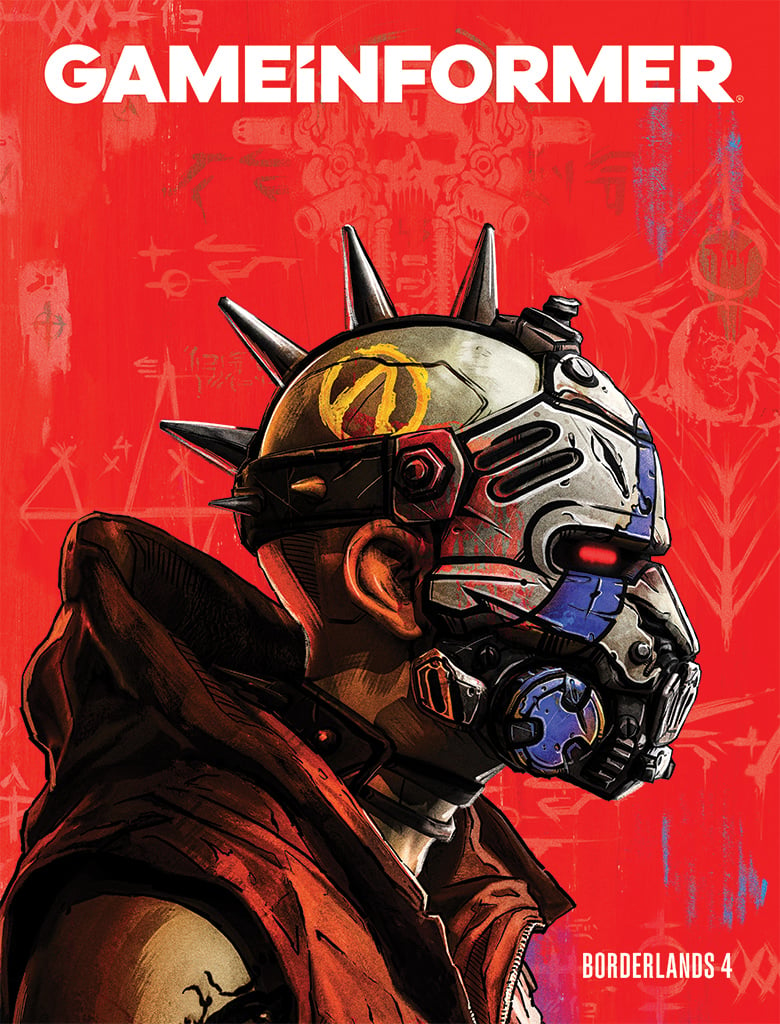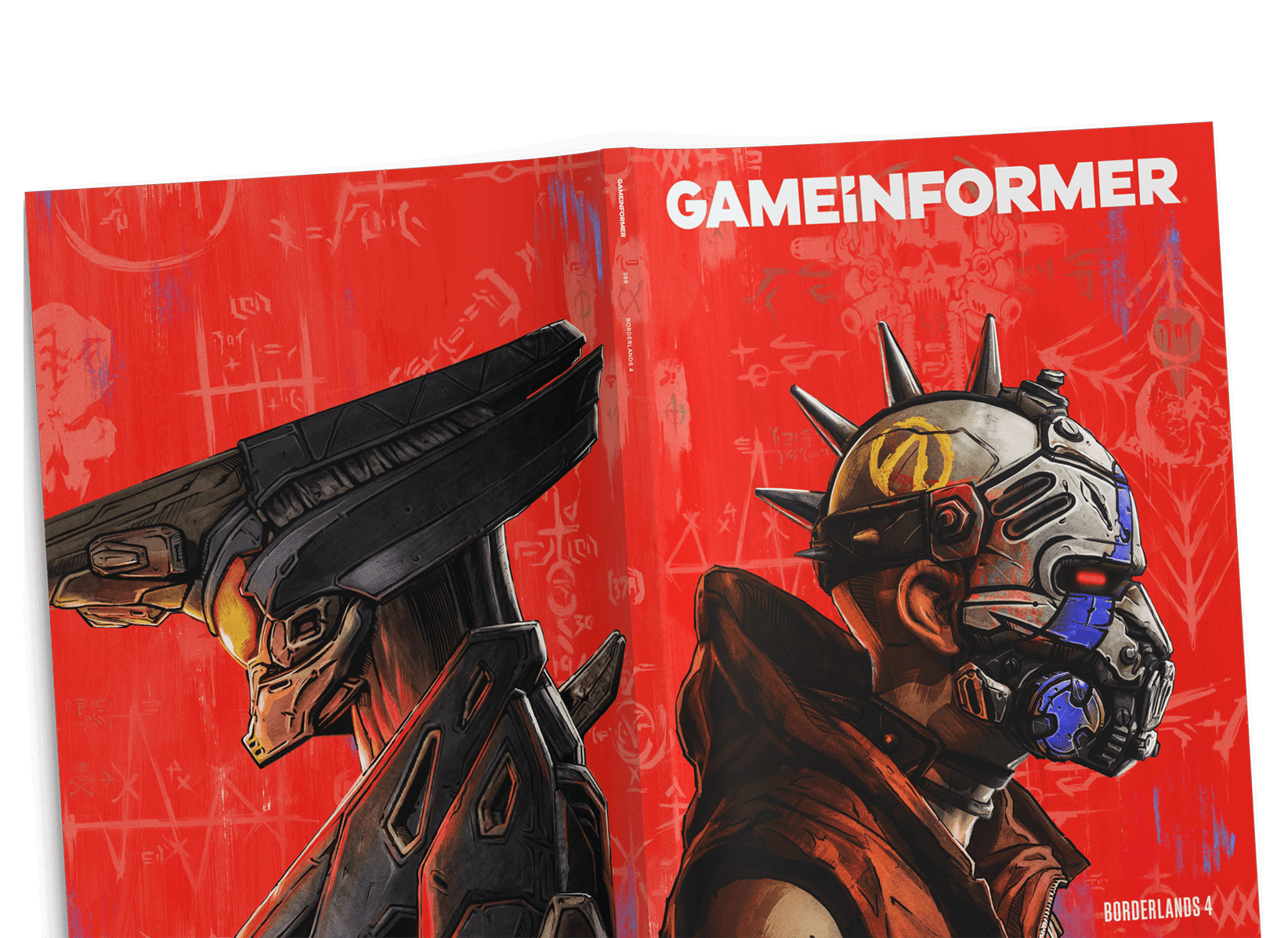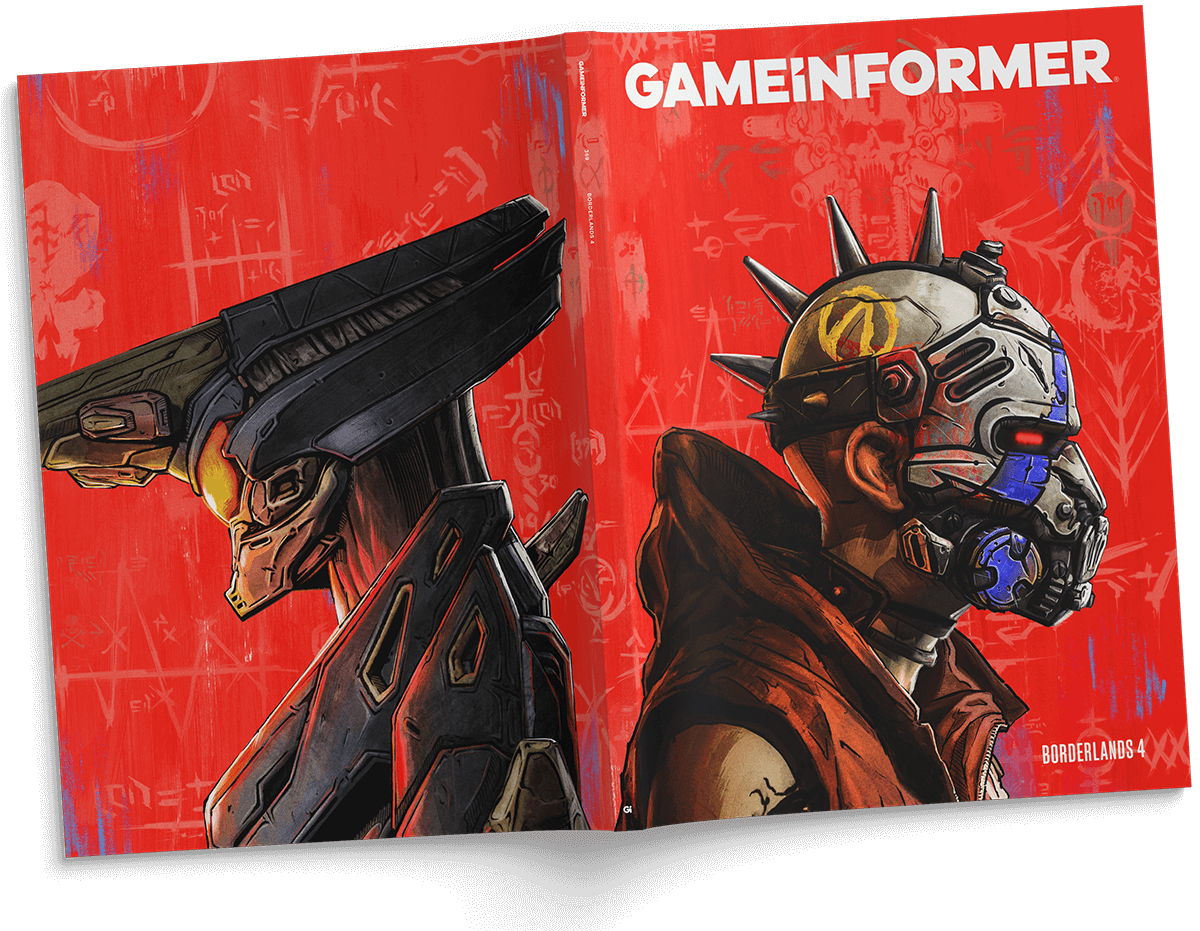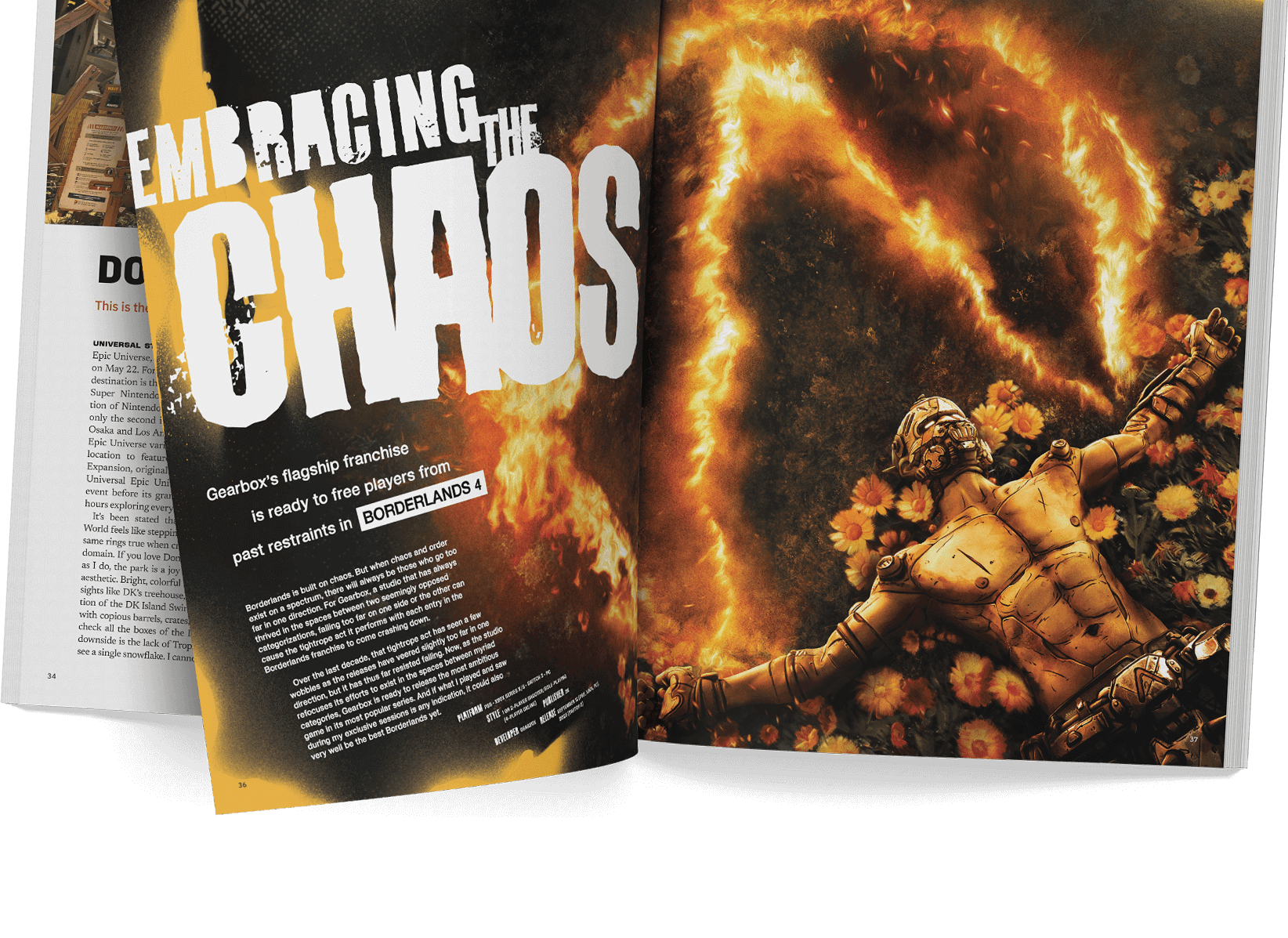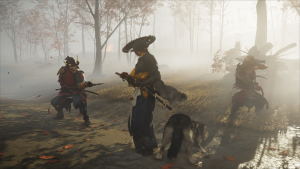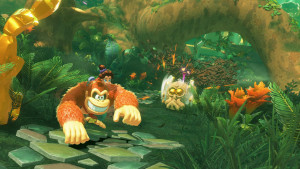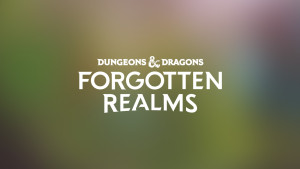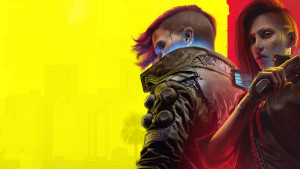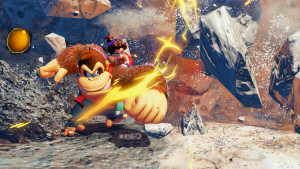Subscribe now to get the Vampire: The Masquerade – Bloodlines 2 issue and a D&D poster pack-in!
Quantum Conundrum Afterwords
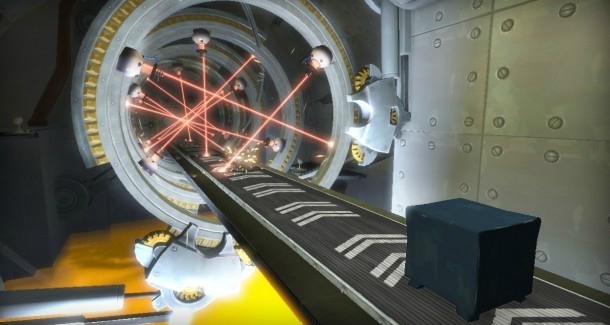
Few companies have dared to follow in the footsteps of Valve’s epic puzzle franchise Portal until Airtight Games released Quantum Conundrum. Some notes aren’t pitch perfect, but puzzle fans are humming with excitement over Quantum Conundrums mix of physics-based puzzles and slapstick environments. We asked the Airtight team for more details about the development of this unique title.
We heard that the idea for the Fluffy dimension came from a toilet paper commercial. How did you think of the other dimensions?
Kim Swift, Creative Director: The concept for Fluffy dimension actually came first and it seemed like a good thing to have a more aggressive, perhaps mildly disconcerting dimension to juxtapose against the cuddliness that is Fluffy. So with that came the idea of Heavy dimension. After the initial two dimensions, the team and I had a big brainstorming session where we threw together all sorts of different ideas for types of dimensions. After we collected our ideas, we began to vet them based on their speed and difficulty of implementation and how well they would permute with the other dimensions. With that thinking in mind, we came to the conclusion that in addition to the first two dimensions that we’d prototype Slow Motion and Reverse Gravity.
Did you always plan on having four dimensions or did you ever think about adding more?
Swift: One of the great things about the design of Quantum Conundrum is that it was easily scalable based on the number of dimensions and gameplay objects that we decided to take on. We settled on four as a good number to give us the right amount of gameplay without overwhelming our players.
Is there anything about the way Quantum Conundrum has turned out that surprises you, or that caught you off guard now that it’s released?
Swift: As far as surprises, it’s always fun to see people do speed runs. We all knew that with the inherent nature of physics games that people were going to come up with some crazy solutions. There are some pretty cool ones out there.
What made you guys decide to turn this concept into a downloadable game instead of developing it further for boxed retail release?
Swift: Honestly, it’s an interesting time in the gaming industry right now. The disparity of budget between AAA titles and smaller downloadable and mobile titles has only been getting wider and wider. Making a retail box title for a new, unproven concept is risky given the higher production and marketing costs. The great thing about downloadable titles is that it gives development teams a chance to prove out their ideas with less inherent risk. I think that’s why the downloadable space is so interesting to watch right now; there are so many cool, innovative ideas right now.
Was there anything you weren’t able to fit into the game because you didn’t have time?
Kasey Quevedo, Art Director: Art-wise, we would’ve liked to have had time to make more unique objects and set pieces for the environments. We built a fairly comprehensive environment toolset to accommodate many different room shapes and puzzles sizes, but with the amount of puzzles we ended up with, it gets apparent after a while. I think we still had a lot of fun coming up with new configurations using the same pieces. We ended up with a lot of odd faces in the Uncle’s tech objects if you look around enough.
Was it tiring to create art assets for everything four times, or did you have fun coming up with the look for each dimension?
Quevedo: It was definitely fun coming up with the different looks for the dimensions. We had a lot of different ideas thrown around, but ease of recognition definitely won out in some ways. We wanted the player to know which dimension they were in immediately, so we kept things simple and recognizable. This actually helped when it came time to build the objects for each dimension. A lot was done with changes in materials as opposed to building a new piece for everything. We wanted to change silhouettes of the objects that you would notice the most, though, so we built new dimensional variations for objects where we would basically get the biggest win. Like the safe for example.
Ike is kind of a strange, creepy creature. What’s his story? Was he ever intended to have a bigger role in the game?
Swift: Yes, yes he is strange and rather creepy. Ike, or Inter-Dimensional Kinetic Entity, is a pan-dimensional being that followed Professor Quadwrangle back to the Manor one day and just made himself at home. When I originally conceived of the character, I had in mind that from far away he’s adorable and cuddly but if you get up close there’s something kind of off-putting about him, especially with his eyes. He has the ability to see in multiple dimensions at once. I think that would make anyone a bit unhinged.
Quantum Conundrum features more than a few parallels to Portal. Did you guys wholeheartedly embrace those similarities during development or was some of that accidental?
Scott Wade, Concept Artist: We knew that Quantum Conundrum would be able to stand on its own once people got their hands on it, so during development the motto was, “Do what’s right for our game.” We didn’t want to make the mistake of making bad decisions just because we were worried about comparisons. But at the same time we needed to make sure our answers to various problems were truly our own. So the idea was to just make sure that the things that make Quantum Conundrum different and fun got their chance to shine. To make something unique you have to think less about what has already been done and more about what you want to do.
Why does Professor Quadwrangle dislike his nephew so much? He seems a little off-putting.
Wade: Professor Quadwrangle is kind of just a big kid at heart; an eight-foot-tall super-scientist kid. On some level, he does like his nephew because it’s a chance to show off all his cool science stuff. But at the same time he dislikes his nephew because he has a tendency to break everything. Professor Quadwrangle is like the kid on the playground who wants to show off his new toy but doesn’t want you to touch it.
Some of the game’s puzzles require a level of dexterity that makes the game difficult to play with a keyboard. Was this a concern or did you figure most people would play with a controller?
Greg Poulos, Producer/Designer: When we brought in people to playtest we would always give them the choice of keyboard and mouse or controller and they picked whatever they were most comfortable with. Some chose keyboard and mouse, but most picked the controller. The same thing went for the developers on the team as we were creating the game; everyone has a controller at their desk so they could use that instead of the keyboard and mouse if they wanted to. We figured most people would choose between the keyboard and the controller depending on their preference, but the percentage of players that have that option may be less than we anticipated.
One of the coolest parts of the game was seeing how different dimensions could be used in conjunction to solve puzzles. During development, did you find that any of the dimensions interacted with one another in odd or unexpected ways?
Poulos: Some of the coolest discoveries happened between the gameplay objects and the dimensions. Our lead environment artist, Matt Salladay, was just messing around with Reverse Gravity dimension one day and discovered that by feathering between Reverse Gravity and Normal while riding on a safe you could travel as far as you want. That became a major element of several puzzles. Another discovery was the horizontal stacking of safes in Fluffy dimension with the help of a fan. One of our programmers, Ryan Young, noticed two safes stuck on each other against a wall and said "hey, can you stand on those?" and Yes, you could! That mechanic became the central design point of the final puzzle in the first wing of the mansion.
